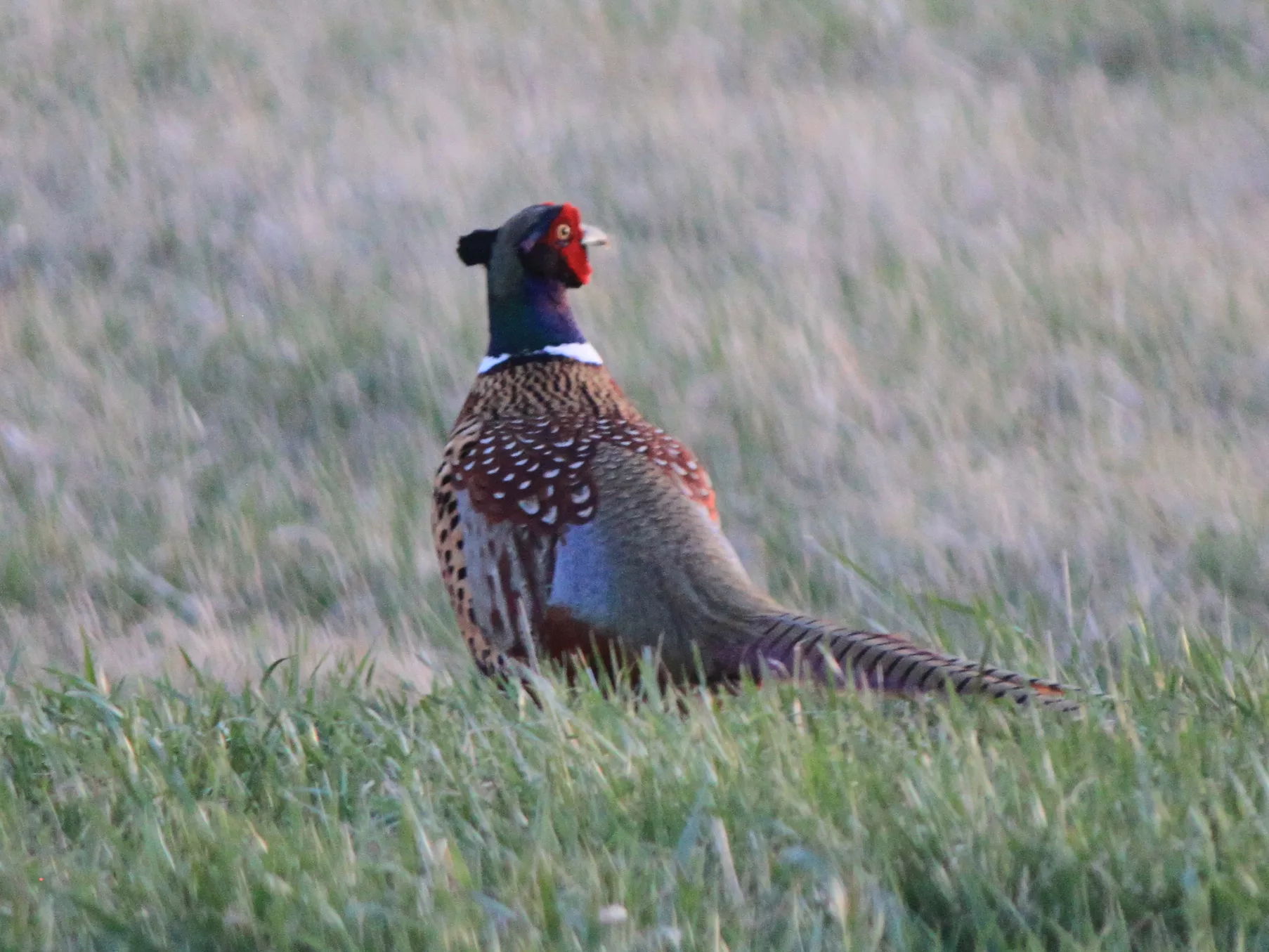
Get the Edge. In early autumn roosters will relate to light cover, such as grassy spaces, that they can easily move in and out of. Focus on where that habitat meets fields and other transitions to find more roosters. Simonson Photo.
By Nick Simonson
With pheasant season underway, more and more great opportunities for these birds are opening up as agricultural fields come down. As harvest rolls along, birds begin to pile into hiding places from the grasses of early autumn to heavier cover like sloughs and stands of brush as things get chilly. Knowing where pheasants go as the season progresses will help increase the odds of success and provide some easy-to-remember starting points for experienced hunters and those new ones hitting the field this fall.
In The Open. The warmer days of early autumn allow pheasants to move freely without concern for exposure to winter’s cold temperatures just a few weeks down the road. As a result, those wide expanses of grass on a favorite Wildlife Management Area will hold roosters at this time of year. Narrowing down where they are located, however, can be a bit of a challenge in these sometimes vast loafing areas. As a creature of the edges, look for pheasants to be in those grasses adjacent to cut fields where they can easily feed and move back to cover. Work such parcels from the outside in, strategically eliminating the high percentage real estate until birds are found and target places where the cover shifts if they’re not near a food source.
Brush Up. Another great area of light fall cover comes in the form of brush. Whether it’s a stand of buffaloberry bushes on a prairie hillside or a planted row of dogwoods or caraganas for soil conservation, areas of sprawling brush give pheasants cover from predators and an edge that they can work for escape. Those bushes that provide some sustenance, such as Russian olives, pull double duty as not only cover but also a secondary food source. In those areas of open grass, make note of these small trees and shrubs that pheasants relate to, and let those dogs get in there to figure out where the birds are.
Water Ways. With things drying up as this particular fall season progresses, pheasants relate to water. From stock ponds to creeks, it’s not uncommon to find birds near water sources in autumn. While these spaces fulfil the hydration needs of pheasants, it’s more often the cover that accompanies them which pheasants are attracted to as it can’t be tilled and sits idle, providing protection from predators and some great edges for hunters to work. From the time they hatch, pheasants can also find food in these places, as insects abound in the dampness and seed-bearing plants are commonplace. Make a note of creeks, rills and other spaces of running and still water to target for pheasants this fall.
Thickening Up. On those cooler nights, as the fall season comes to its conclusion and winter approaches, those areas of thicker cover are key starting points for pheasants. While they may be a challenge to work and walk through, cattail sloughs are havens for pheasants when they start to look for thermal cover as temperatures drop. Starting on those edges where sloughs abut grassy reaches or even jut out into a harvested field will help produce some exciting flushes. At the beginning of the day, pheasants can be chased from these areas where they often overnight providing a solid start to a hunting trip.
Keep these places in mind as pheasant season ramps up and fall gets going. Odds are such spaces will hold roosters throughout the season and provide an opportunity to add some heft to a hunting vest this fall…in our outdoors.
